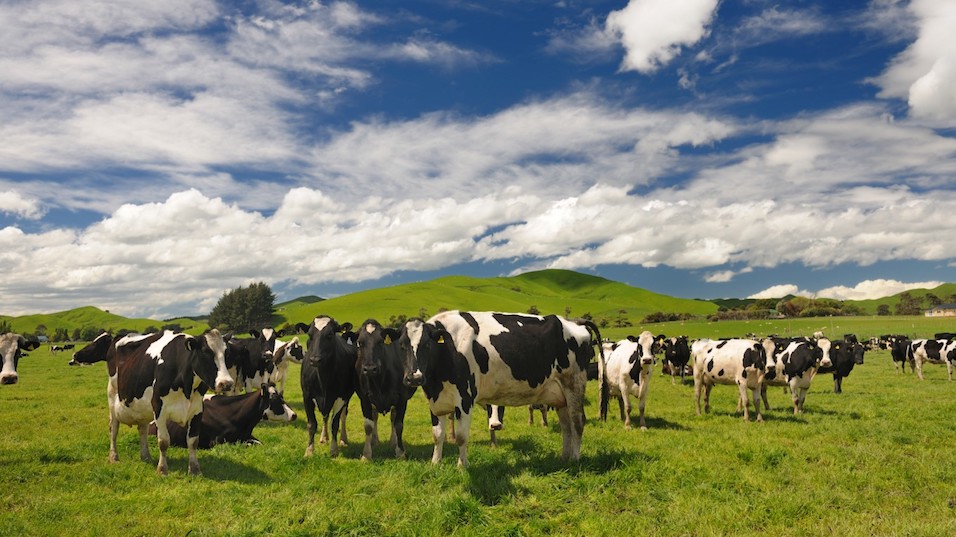Recent media attention has exposed some of the issues that face New Zealand’s dairy industry and the impact it is having on the nation’s highly prized waterways.
In April, a report by ABC Australia’s Foreign Correspondent program provided a revealing insight into the state of New Zealand’s rivers. It linked the expansion of the dairy industry to rapid degradation of freshwater water quality, but it did not address some of the primary causal factors.
In the early to mid-2000s, the New Zealand dairy industry expanded rapidly, driven mostly by demand from China for milk powder. Existing dairy farms expanded and intensified their operations while sheep farms were converted to dairy in many areas of the country. Large tracts of plantation forest were also converted to dairy farms in the central North Island. From 2004 to 2015 Landcorp, a New Zealand government state-owned enterprise, cleared plantation forests to establish pasture for 17,000 cows in the catchment of New Zealand’s longest river, the Waikato. Concurrently – in 2011 – the first tranche of funding for river restoration was being delivered by the Crown as part of a $210 million treaty settlement with five Māori tribes along the Waikato River.
In the mid-2000s I voiced that a moratorium on new dairy developments would allow time to undertake a comprehensive assessment of the environmental effects of dairy expansions. By 2020 the total dairy cow herd had exceeded 6 million, equivalent to a human effluent load of approximately 100 million. Dairy – the main consumer of synthetic nitrogen fertiliser – has undergone rapid intensification, and between 1990 and 2015 nitrogen fertiliser use increased by 627 per cent. At the same time the irrigated land area in New Zealand nearly doubled, mostly in response to dairy expansion into drier central and eastern areas of both the South and North Islands.
Grass growth slows in winter in the temperate climate of New Zealand and farmers have traditionally had to constrain stock densities, depending on access to local winter feed (e.g., hay, silage). However, import of relatively cheap palm kernel (for example, 1.8 million tonnes in 2020), which began in 2004, has had several adverse or potentially adverse effects. It has allowed farmers to increase stock densities, resulting in deterioration of soil health and ‘pugging’ in wetter areas of the country.
It has also increased the export of pathogens from manure and nitrogen in urine. The nitrogen is particularly problematic because urea in urine is converted by soil microbes to highly leachable nitrate that rapidly contaminates aquifers in alluvial floodplain areas, such as Canterbury, which has been subject to some of the highest rates of growth in cow numbers.
Palm kernel, aside from the questions about the sustainability of its importation, represents a significant biosecurity risk. Indonesia, the primary source of palm kernel for the New Zealand dairy industry, has a long history of foot-and-mouth disease. Higher stocking densities, often associated with ‘strip-grazing’ using temporary electrified fences (see figure), may also be a source of animal stress and infection (e.g., mastitis) that is commonly treated with antibiotics, with estimates of at least 85 per cent of cows treated with antibiotics at ‘dry off’.
The New Zealand government has responded to pressure from scientists, Māori and community groups by developing a new regulatory framework for freshwater, the National Policy Statement for Freshwater Management, to strengthen the existing Resource Management Act that has failed to address the ‘death by a thousand cuts’ syndrome from ongoing land use change and intensification.
Opinion polls have consistently shown that New Zealanders rate pollution of rivers and lakes as the most worrying environmental issue nationally – and they should be concerned – while New Zealand’s mountains and some of its South Island alpine lakes are largely in a natural state, its lowland rivers and lakes are in dire trouble.
The government seeks to arrest the decline of water quality in five years and to restore water quality within a generation. These goals will not be realised, partly because of the ‘tragedy of the commons’ of catchment water management.
Farmers will not disinvest from dairy conversions after installation of costly milking platforms and irrigation infrastructure, and, if land use change does occur, the land and water will need time to heal, particularly where water takes many years and decades to flow from the land, through groundwater, and into lakes and the coastal environment. A major legacy from the past 20 years of unsustainably managed dairy conversion and intensification will be the enormous restoration costs, which will only be escalated by any delay and inaction.
AUTHOR
David Hamilton is the Deputy Director and a Professor in the Australian Rivers Institute, Griffith University. He has held positions in Environmental Engineering at the University of Western Australia and Biological Sciences at the University of Waikato in New Zealand. He was appointed as the inaugural Bay of Plenty Regional Council Chair in Lake Restoration at the University of Waikato in 2002 and held this position for 15 years, until his current appointment. His research has involved testing and modelling of lake restoration actions and more generally, documenting the restoration and recovery of freshwater ecosystems. In recent years he has been closely involved in management and policy implementation for freshwater ecosystems, holding appointments with the Ministry for the Environment (NZ) and advisory roles for regional councils and industry groups in New Zealand and Australia. Prof Hamilton is Head of Eco Detection’s Scientifc Advisery Committee.
Published by Enlighten, Griffith University January 2022

